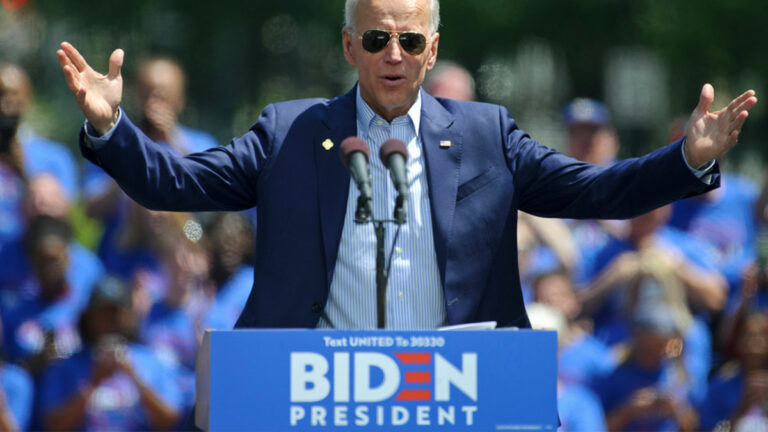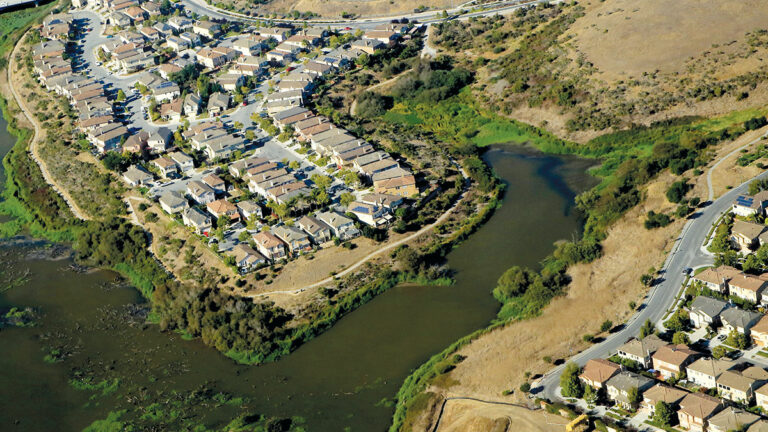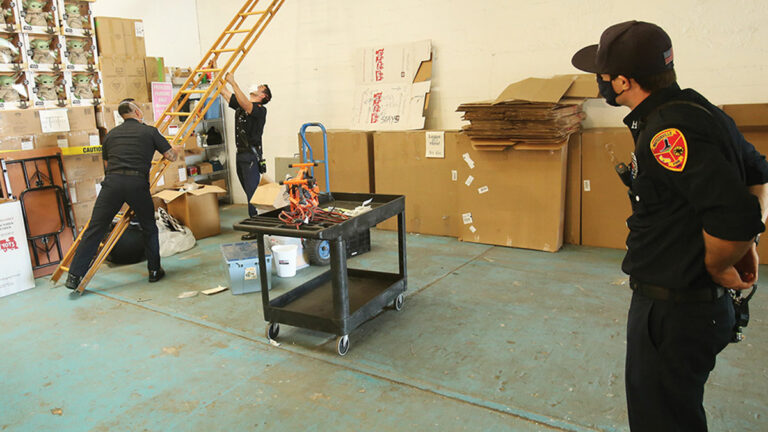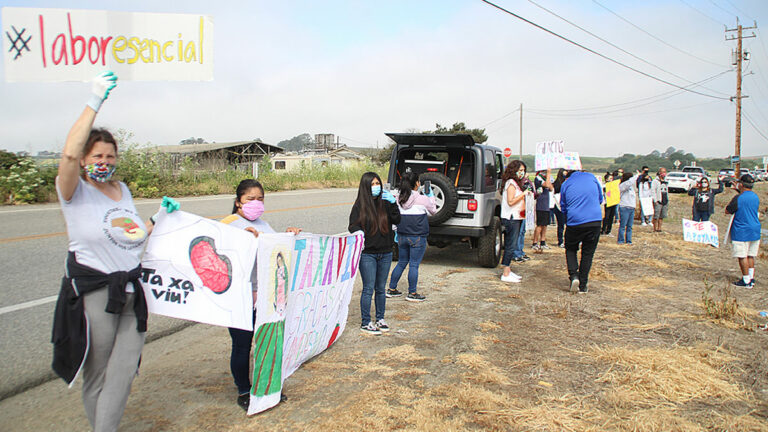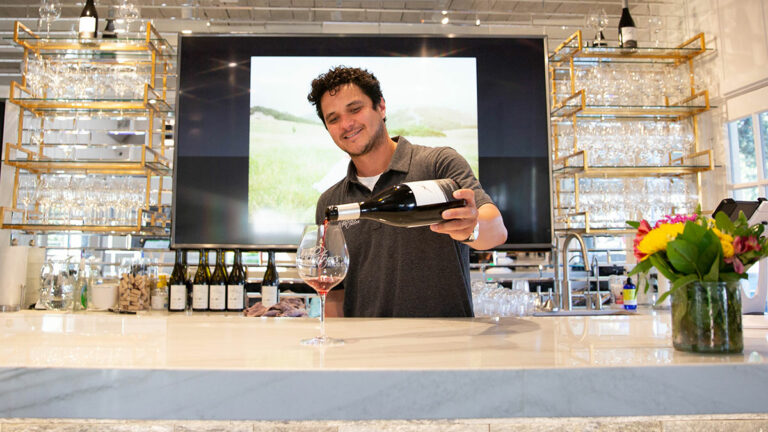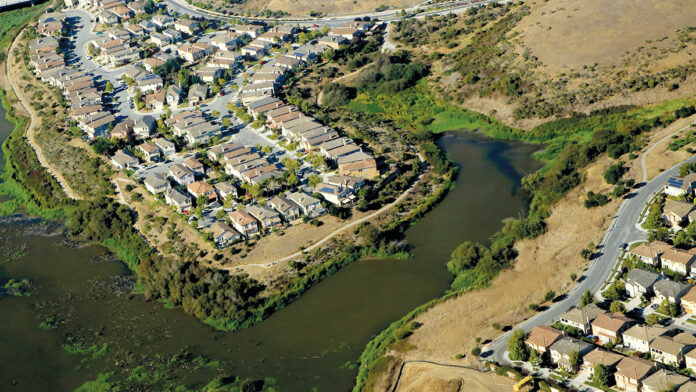Because many in-person events across Santa Cruz County have been canceled or postponed during the pandemic, Good Times is compiling a weekly list of virtual events hosted by local nonprofits, artists, fitness instructors and businesses. To submit your virtual event, send an email to ca******@go*******.sc.
ARTS AND MUSIC
11TH ANNUAL MORTON MARCUS POETRY READING Join the 11th annual Morton Marcus Poetry Reading, featuring honored guest Morgan Parker. Poet Gary Young will host the program, and the evening will include an announcement of the winner of the Morton Marcus Poetry Contest (recipient receives a $1,000 prize). The Morton Marcus Poetry Reading honors poet, teacher, and film critic Morton Marcus (1936–2009). Marcus was the 1999 Santa Cruz County Artist of the Year and a recipient of the 2007 Gail Rich Award. He taught English and Film at Cabrillo College for 30 years, was co-host of the radio program “The Poetry Show,” and was co-host of the television film review show, “Cinema Scene.” Nov. 12, 7pm. Register at: ucsc.zoom.us/webinar/register/WN_cIV7oLUBTL67MuXifqdrnw.
GARDEN OF HOPE SANTA CRUZ FASHION SHOW The Garden of Hope Santa Cruz Fashion Show celebrates survivorship on its 11th anniversary. The American Cancer Society’s 11th Annual Garden of Hope Santa Cruz Fashion Show includes a silent auction, and the event will feature our cancer survivors as models, a few words from a American Cancer Society’s funded Researcher, and a brief memorial to honor cancer victims. We will also honor our donors and sponsors, without whom we cannot function. Once again, our host emcee will be Zach Friend, Santa Cruz County supervisor. To date, the gala event has raised nearly $1 million for American Cancer Society patient services, research, education and advocacy. The event will be held on Sunday, Nov. 15, at 1pm with live entertainment. The silent auction registration will begin on Friday, Nov. 6 and close at 5pm on Sunday, Nov. 15. This will be a virtual event, so participants can participate from the comfort of their own homes via Zoom. This will allow participants the ease and time to bid on their favorite items! For more information, to donate and to register, visit: acssccr.ejoinme.org/MyEvents/2020SantaCruzFashionShow/tabid/1132511/Default.aspx
THE ART OF DYING WELL BOOK DISCUSSION Are you prepared for life’s final journey? Using “The Art of Dying Well” by Katy Butler as a guidebook, Vanessa Silverstein from Hospice of Santa Cruz County will lead a discussion exploring end of life planning to create peace of mind for ourselves and those we leave behind. A free copy of the book will be provided to the first 20 people who register. Thursday, Nov. 5, 5:30pm. To register visit: bit.ly/wpljourney.
MOVIES AT THE MAH: COCO Kick back and enjoy Movies at the MAH presented in partnership with Westside Video. Through the fall we will be screening films that inspire and help us grow through this moment together. Following our month-long series of events for Día de los Muertos, the MAH and Westside Video have teamed up to share the heartwarming 2017 animated film, “Coco.” So grab a drink or snack at the Market and join us in Abbot Square! Space is limited to allow for adequate physical distancing on the patio. There is no pre-registration required, drop-by when you can but, if possible, we recommend you arrive early to ensure you have a seat. Thursday, Nov. 5, 7pm. Learn more: santacruzmah.org/events/movies-nov.
SHE ADVENTURES FILM TOUR VIRTUAL SCREENING This collection of the most inspirational, heartwarming and entertaining films celebrates women in adventure from independent filmmakers around the globe. The She Adventures Film Tour includes a unique selection of films of varying lengths and styles covering topics relevant to women in the outdoors who aren’t afraid to get dirty in their pursuit of adventure. Our aim at the She Adventures Film Tour is to build a community who support adventurous women. By showcasing and celebrating the female adventurous spirit, we hope to make women in the outdoors more visible. But She Adventures isn’t just for women. She Adventures is for all of us to celebrate diversity and inclusion and the inspiring ladies of the adventure world. Presented by the Rio Theatre. Nov. 12-22 only. Once you start viewing the program you have 48 hours to finish watching it or until midnight on Nov. 22, whichever comes first. Learn more: riotheatre.com/events-2/2020/11/11/she-adventures-film-tour.
CATAMARAN ART SHOW AT R. BLITZER GALLERY Starved for real live artwork? Then don’t miss the Seventh Annual Catamaran Show at the R. Blitzer Gallery, featuring a curated array of original artwork from Linda Christensen, David Ligare, UCSC alumna Julie Heffernan, Frank Galuszka, Noah Buchanan, Joao De Brito and Philip Rosenthal. While you’re there don’t miss artworks by Robert Blitzer, Alan Sonneman, Rand Launer and handmade stringed instruments by luthier Charles Sutton. Open now through Nov. 27. Tuesday and Thursday noon-5 pm or by appointment. Strict Covid-19 protocols followed (masks, five or six people at a time, social distancing). R. Blitzer Gallery, 2801 Mission St., Santa Cruz. 831-458-1217.
CLASSES
FALL/WINTER BASEBALL CLINICS These clinics have an emphasis on fun while working through drills to improve infield and outfield work, hitting, pitching, and athleticism. Players learn the foundational skills needed to become better ball players, athletes and young adults. We’ll bring the joy of baseball to life by playing mini games and creating friendly competition! Join us every Sunday for a full hour and a half of baseball! Clinics are held indoors and outdoors and will take place rain or shine. Three player minimum required for class to take place. Six player maximum cap for each class. Sundays at noon. Learn more: paradigmsport.com.
SALSA SUELTA IN PLACE FREE ZOOM SESSION For all dance-deprived dancers! Free weekly online session in Cuban-style Salsa Suelta for experienced beginners and up. May include Mambo, ChaChaCha, Afro-Cuban Rumba, Orisha, Son Montuno, Cuban-Salsa. Ages 14 and up. Thursdays at 7pm. Contact to get Zoom link: salsagente.com.
TECH TALKS: WHAT’S NEW ON IOS 14 Learn about the privacy and productivity features and settings available to you with the new iOS 14 on the Apple iPhone. Join us virtually as we demonstrate the iOS 14 highlights—enabled on the iPhone’s newest operating system. iOS 14 is compatible with the iPhone 6s and later. It is recommended that you download iOS 14 beforehand if you wish to participate in the active demonstrations. Thursday, Nov. 5, 11am. Register now: santacruzpl.libcal.com/event/7215778.
NAMI FAMILY-TO-FAMILY CLASS NAMI’s Family-to-Family Class is an eight-week educational program for family and friends of adults with mental health challenges. Learn about how to support your loved one, gain valuable communication and coping skills, and become educated on the latest mental health research. Class is led by two trained volunteers with lived experience caring for someone with mental health conditions. Sign up online and learn more at namiscc.org/family-to-family.html. Mondays and Wednesdays at 6pm.
CHILDBIRTH EDUCATION WEEKEND EXPRESS CLASS This Saturday and Sunday virtual class from Dominican Hospital is intended for expectant mothers and their labor support team. Focus will be on the birth process, including the stages of labor and when to go to the hospital. Non-pharmaceutical coping techniques for pain, including breath work, mindfulness practices, supportive touch and positions for labor and birth, along with standard hospital procedures, pain medication options, medical interventions, cesarean birth, postpartum recovery, newborn procedures and breastfeeding basics. In this class, we will actively practice positions and coping techniques for pain, so please be dressed for movement. Please register for the PEP class session. Only after you have completed this process, the Zoom meeting information will be provided to you via email prior to your class. Classes run 1-5:30pm on these days: Nov. 14-15 and Dec. 19-20.
COMMUNITY
EVENING OF WINE AND ROSES Community Health Trust of Pajaro Valley announces its annual fundraising event, An Evening of Wine and Roses. This will be a virtual event, Friday, Nov. 6, at 6pm, including an online auction from Nov. 2-10. With each purchase of an auction item and/or Wine and Roses Experience, funds go to support Community Health Trust programs and services of fostering health and equity for all in Pajaro Valley. No fee required to register, and all purchases support Community Health Trust. Wine and Roses Coupon Book for purchase of $50 each. Enjoy discounts at the eateries you’ve come to love at Wine and Roses throughout the entire year.
TALES TO TAILS GOES VIRTUAL SCPL’s early childhood literacy program, Virtual Tales to Tails, has moved to a new time slot: Mondays, 3:30-4:30pm. At the end of your school day, hop online and have fun reading at your own pace to an audience of therapy dogs, cats and other guest animals. Have math homework? Good news! Your furry audience would also love to learn how to count, add and subtract. Register online. Registrants receive reminders, links to the live program, and fun (educational) activities to complete and have showcased on future sessions Learn more at santacruzpl.libcal.com/event/6764938.
GROUPS
VIRTUAL YOUNG ADULT (18-30) TRANSGENDER SUPPORT GROUP A weekly peer support group for young adults aged 18-25 who identify as transgender, non-binary, genderqueer, agender, or any other non-cisgender identity. This is a social group where we meet and chat among ourselves, sharing our experiences and thoughts in a warm, welcoming setting. Our meetings will be held on Discord during the shelter-in-place order. For more info, contact Ezra Bowen at tr***@di*************.org.
LGBTQNBI+ SUPPORT GROUP FOR CORONAVIRUS STRESS This weekly LGBTQNBI+ support group is being offered to help us all deal with stress during the shelter-in-place situation that we are experiencing from the coronavirus. Feel free to bring your lunch and chat together to get support. This group is offered at no cost and will be facilitated by licensed therapists Shane Hill, Ph.D., and Melissa Bernstein, LMFT #52524. Learn how to join the Zoom support group at diversitycenter.org/community-calendar.
OUTDOOR
FISH AND CHIPS: TRACKING TUNAS AND SHARKS IN OUR BLUE SERENGETI The Earth’s oceans cover the majority of the surface area of our planet, yet our understanding of the marine ecosystem is limited. Dr. Barbara Block, Professor of Biology in Marine Sciences at the Stanford University Hopkins Marine Station, presents her (rock-star level, pioneering) work studying tunas and sharks across our global oceans, enabling proactive fisheries management and conservation. Part of the Center for the Blue Economy Speaker Series at the Middlebury Institute of International Studies. Free, open to public, no registration required. Online via Zoom. Tuesday, Nov. 10, 6pm. Learn more: go.miis.edu/sustainability. For questions, contact Rachel C., Center for the Blue Economy, cb*@mi**.edu, 831-647-4183 (leave message to receive call back).
SUSTAINABILITY, SYSTEMS THINKING, AND WELL-BEING: GIVING VOICE TO DATA Oregon is the only state in the union with a vision for the consumption of materials extending to 2050 that is ratified by the legislature and supported by the Environmental Quality Commission. The Vision expands the charter of the solid waste management to examine material consumption and the associated environmental burdens from a system wide perspective. This expanded view, referred to as systems thinking or life cycle approach, uncovers environmental hotspots within the material flows that support economic activities. This unique state-level charter combining research, long term strategic outlook, and policy perspective is well-placed to identify options to reduce environmental and social hotspots related to consumption in the States. Speaker: Mr. Minal Mistry, Business Initiatives Lead, Oregon Department of Environmental Quality. Part of the Environmental Justice and Sustainability Speaker Series at the Middlebury Institute of International Studies; Free, open to public, no registration required. Online via Zoom. Thursday, Nov. 5, 12:30pm. Learn more: go.miis.edu/sustainability. For questions, contact Rachel C., Center for the Blue Economy, cb*@mi**.edu, 831-647-4183 (leave message to receive call back).
TIBETAN SOUND HEALING MEDITATION OUTDOORS Sound healing is a sacred and powerful meditative practice that has grown enormously in popularity in recent years. Come join a small, socially distanced, outdoor gathering in our meadow. Let Kalden’s soothing sound meditation bring ease to your nervous system and aid in the expression of positive feelings such as peace, joy and connectedness. Sunday, Nov. 8, 4pm. Learn more: landofmedicinebuddha.org/events.
ASTRONOMY ON TAP Members of the UCSC Astronomy Department will be hosting a virtual “astronomy on tap,” an accessible, engaging, free science presentation on topics ranging from planets to black holes to galaxies to the beginning of the Universe. This week we’ll be discussing fast radio bursts with Sunil Simha (UCSC) and Jay Chittidi (CU Boulder), mysterious interstellar eruptions likely related to neutron stars. In 2007, astronomers discovered a peculiar class of objects now called fast radio bursts (FRBs). These events emit light at radio wavelengths for less than a few milliseconds, yet can release as much energy as our Sun does in a day. We will talk about the discovery of FRBs, our current understanding of these mysterious events, and a new method that uses FRBs to measure the distribution of matter in the universe. Thursday, Nov. 5, 6:30pm. Watch at: youtube.com/watch?v=1MLDxRQZlzA.
SEA CHESS CHARITY TOURNAMENT The Monterey Bay National Marine Sanctuary Foundation is hosting its first online Sea Chess Charity Tournament to benefit conservation efforts of the Monterey Bay Sanctuary. The event will feature two tournaments, with an additional Simultaneous Exhibition against Grandmaster Sahaj Grover. There will be a $15 admission fee for the 5 Rounds G15 Rapid event, and a $10 admission fee for the 5 Rounds G3 + 2 Blitz event. Alternatively, a $20 flat fee will get you admission to both tournament events. There will also be a separate $15 entrance fee for the Simultaneous Exhibition against GM Sahaj Grover. Prizes will be awarded for each of the different event types and will include chess lessons by Woman International Master Charlize van Zyl, GM Sahaj Grover, National Master Gjon Feinstein, and International Grandmaster Ilya Smirin. IGM Ilya Smirin was ranked 13th highest in the world and was the winner of the World Open Tournament in 2014 and 2015. All funds raised during this event will go towards supporting the Monterey Bay Sanctuary’s BayNet, Team OCEAN, and Whale Disentanglement programs. Saturday, Nov. 7, 9am. Learn more: montereybayfoundation.org/event/sea-chess-charity-tournament.
THE STORY OF PLASTIC, FILM SCREENING AND DISCUSSION
Catch the film screening via individual email link sent to registered attendees, watched any time prior to discussion. Join the community discussion Monday, Nov. 9, 7-8pm via Zoom. Registration required. Register at: eventbrite.com/e/the-story-of-plastic-individual-film-screening-and-group-discussion-tickets-120660600103.
Find the Zoom link for discussion and all other details at: middlebury.edu/institute/events/story-plastic-individual-film-screening-and-community-discussion-11-09-2020. For questions contact: Rachel C. at cb*@mi**.edu, visit centerfortheblueeconomy.org, or call 831-647-4183 (leave message to receive call back).


